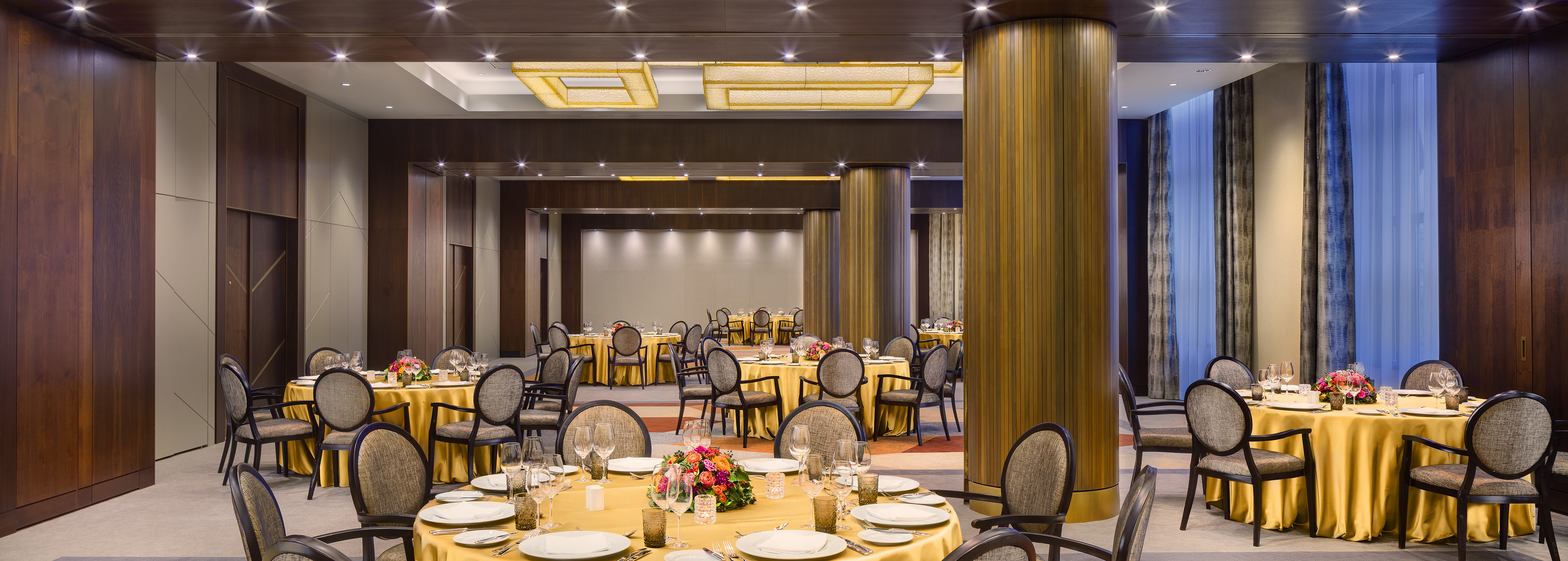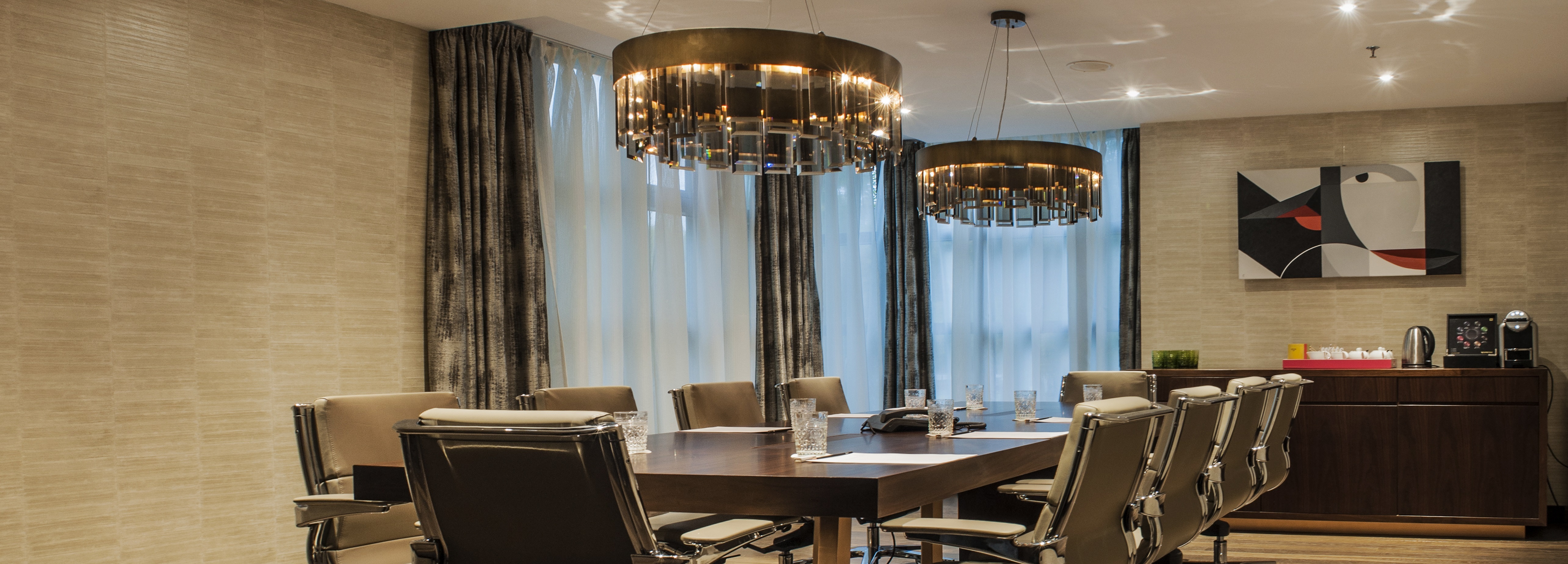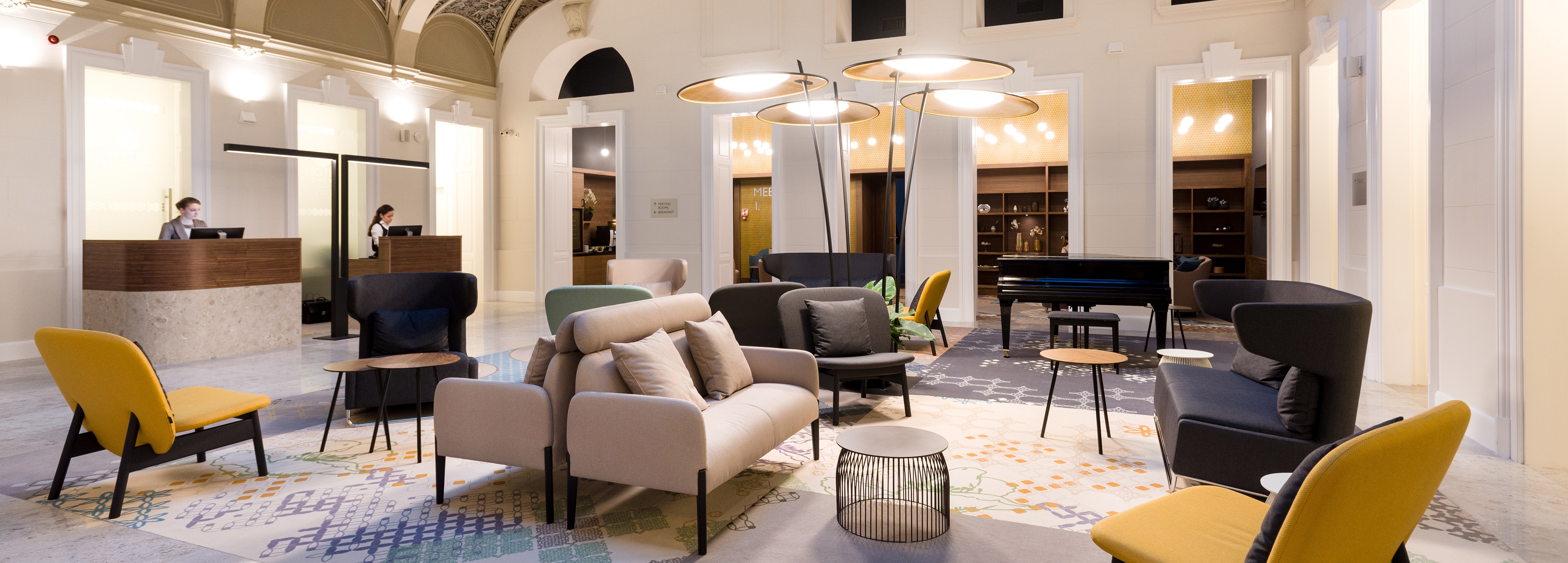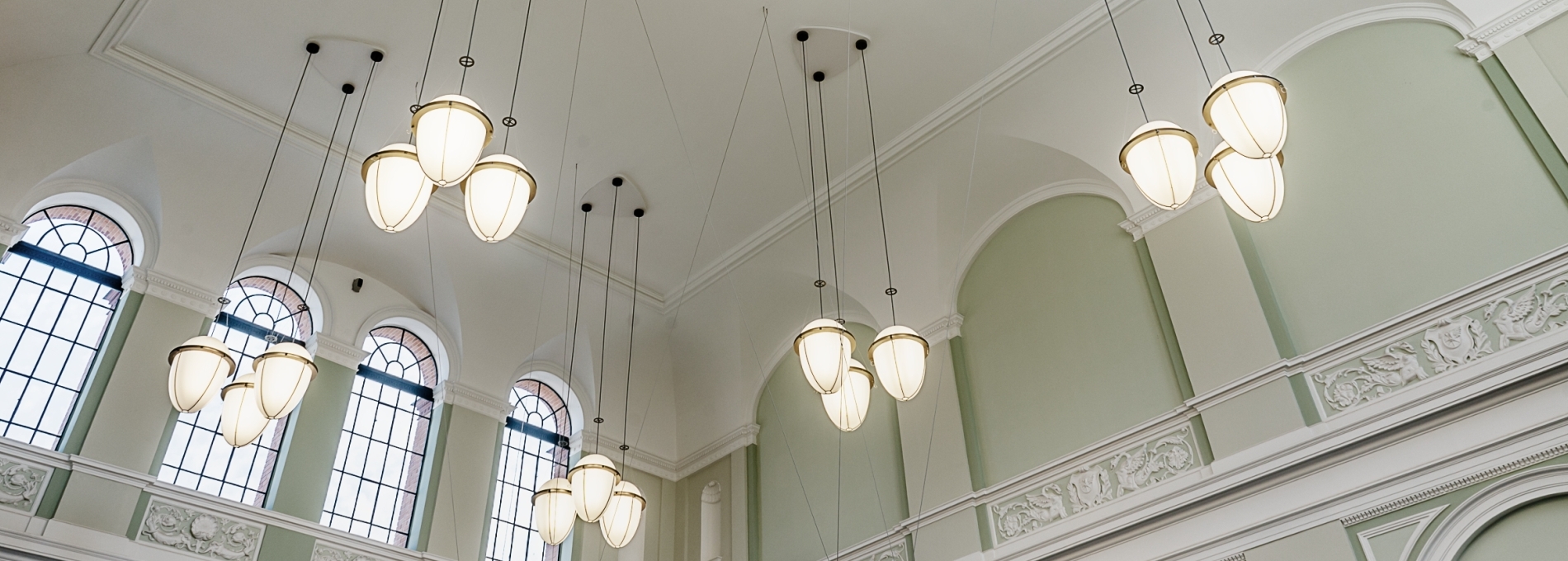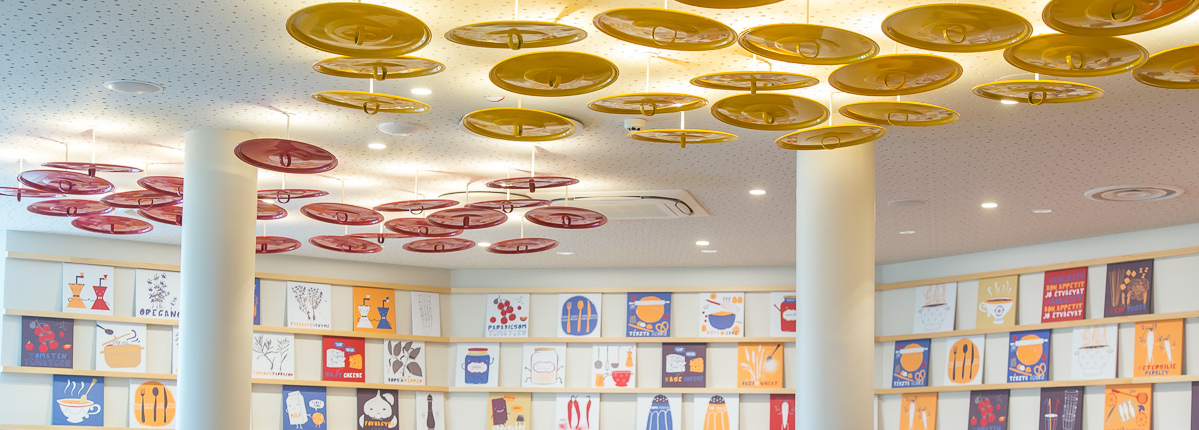News
PRESERVATION OF CULTURAL VALUES – THE OUTSTANDING SPACE AND TIME CAPSULE OF THE JEWISH MUSEUM
At expositions, we do not look at a single object but we focus on an entire group of objects, an arrangement or experience of a space.
Relation of time and space with the Jewish culture – interview with Zsuzsanna Toronyi, Director of the Hungarian Jewish Museum and Archives.
Description of the project and its cultural background
The last memorial exhibition of our museum was opened in 1984 and renewed by 2017. The subject is always relevant: we present the order of Jewish feasts and the objects typical of Jewish life. We are predestined by our objects to do so and this is what captures the interest of our visitors.
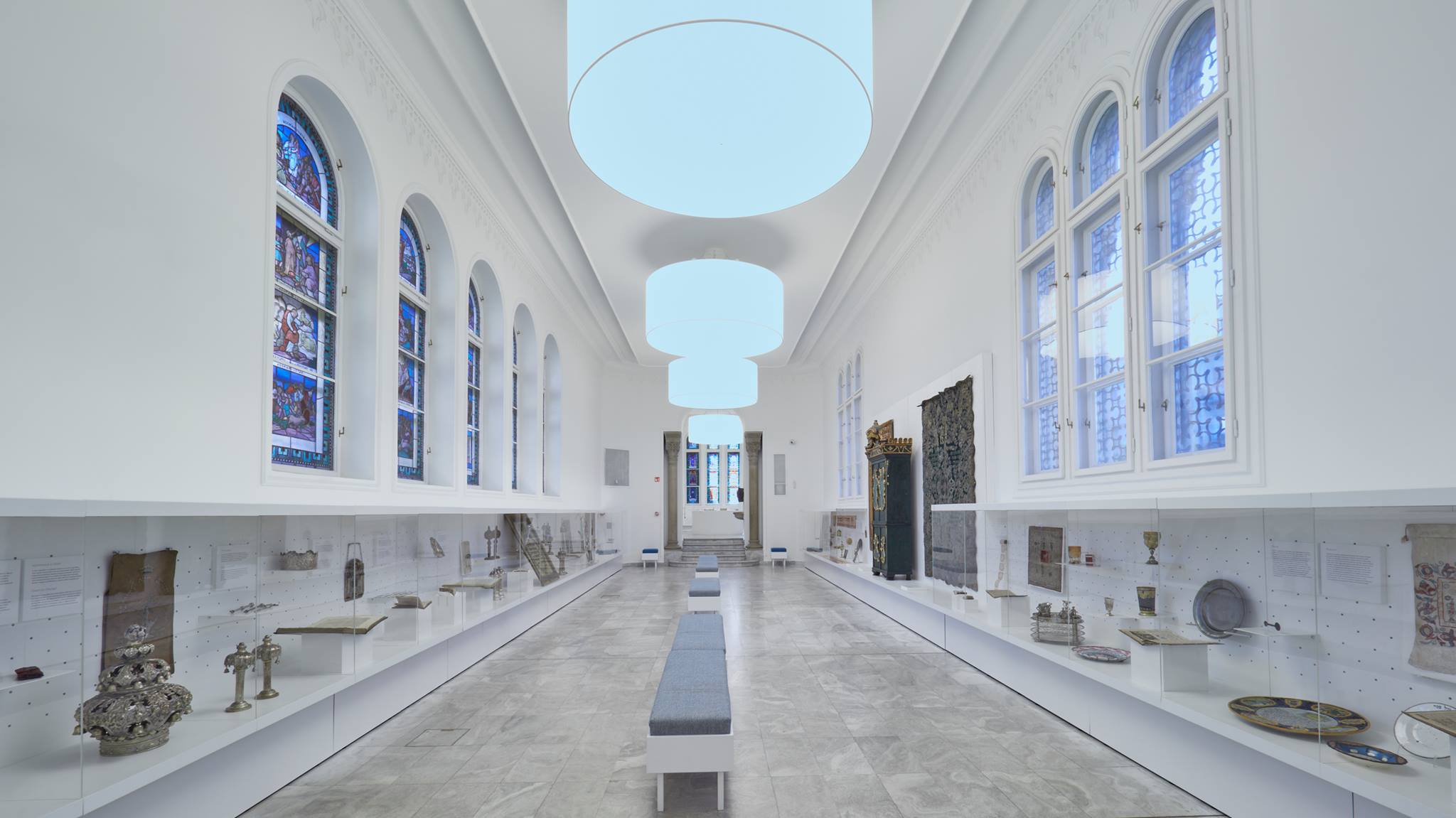
Transformation, first of all, means technical and visual renovation and in order to achieve that, we tried to find an arrangement that fits in the building and at the same time, serves as a guidance for visitors, helping them to navigate through the exhibition in the correct order, so they get what they want: the experience that they understand. In addition, the two topics we consider important in case of every museum (especially in our case) – expressing relation of time and space with our culture – was also a goal. We aimed to present all this with emphasis, visually highlighting – and thus separating – it from other elements of the exhibition. Cylinder-shaped display cases are designed to serve this purpose, being slightly different from other displays generally used in the exhibition, but at the same time, being beautifully integrated in the visual concept, enabling visitors to see a unified picture.
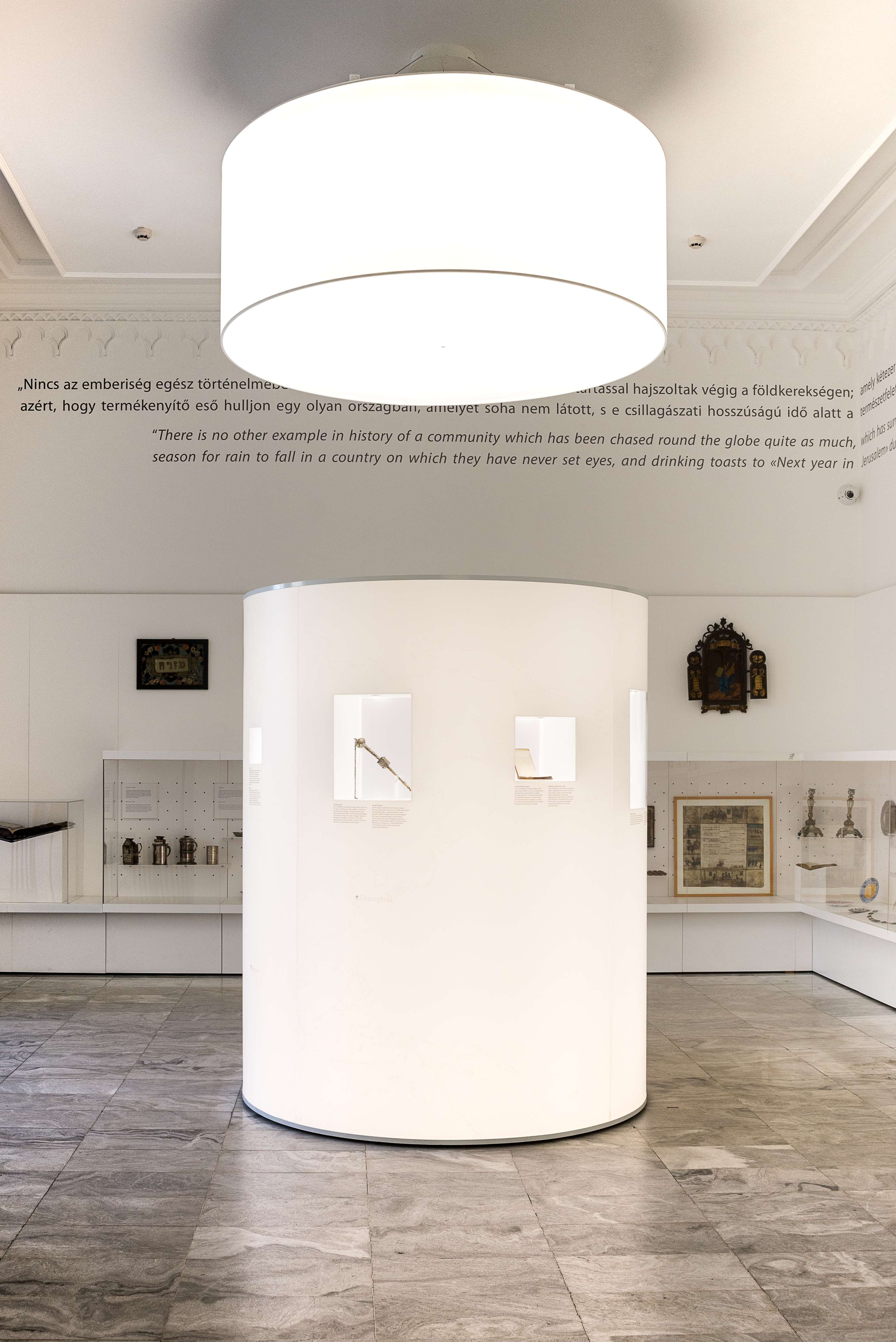
The idea of the space and time capsule
The Jewish Museum is a traditionalist ecclesiastical institution; therefore, it was important for us to find a way to embrace the memory of the old exposition that was uninstalled.
At the current location of the time capsule, there was a grand octagonal glass display case, and this is why there are 8 objects in each cylinder.
We did not find the angular shape appropriate here, considering that everything in the building is orbital and circular – symbolising circularity, perpetual recurrence and the system of identical concepts permanently recurring in time; and we attempted to conceive this by this circular shape.
The rabbi in charge of the museum’s collection is Iván Darvas, with whom we have spent a lot of time contemplating about this, both in terms of the exposition’s subject-matter and content. Atelier Architects, Zsuzsa and Gergő Kiss Gál were engaged to deliver visual design.
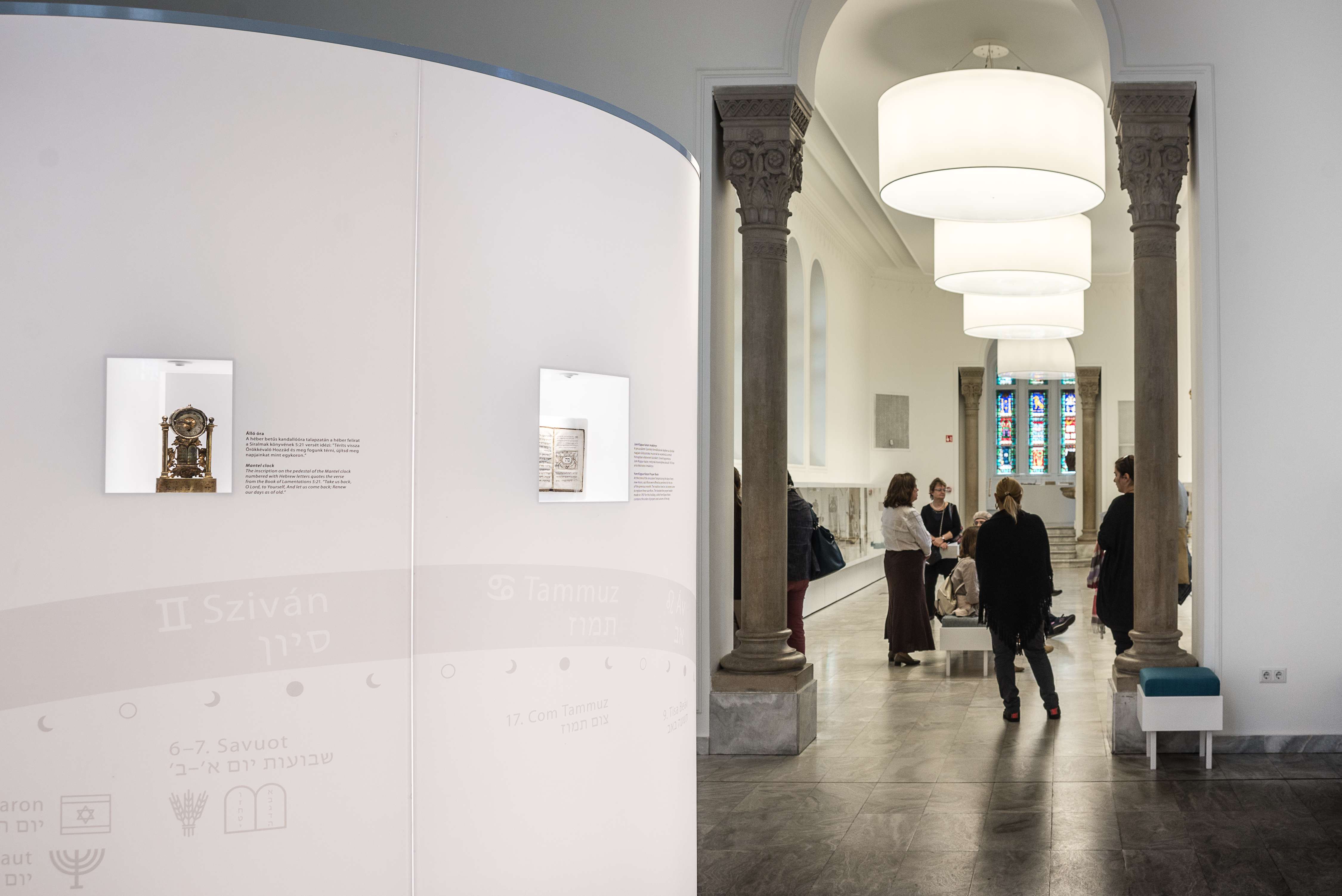
The beautifully ornamented graphical motif is the work of Gábor Dávid.
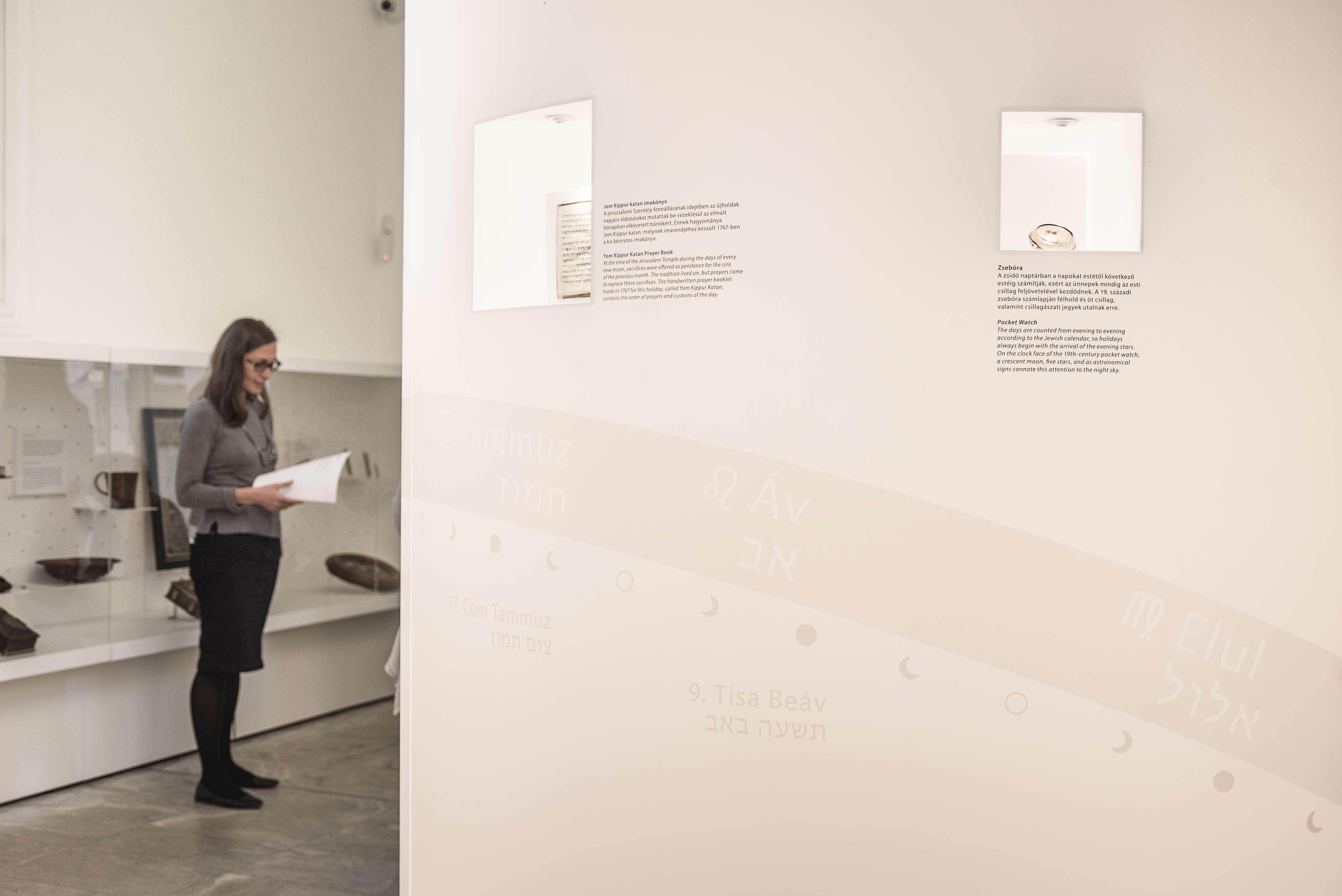
It is the clean design that actually reveals to visitors and clarifies for them that one of the cylinders represent time, while the other symbolises space.
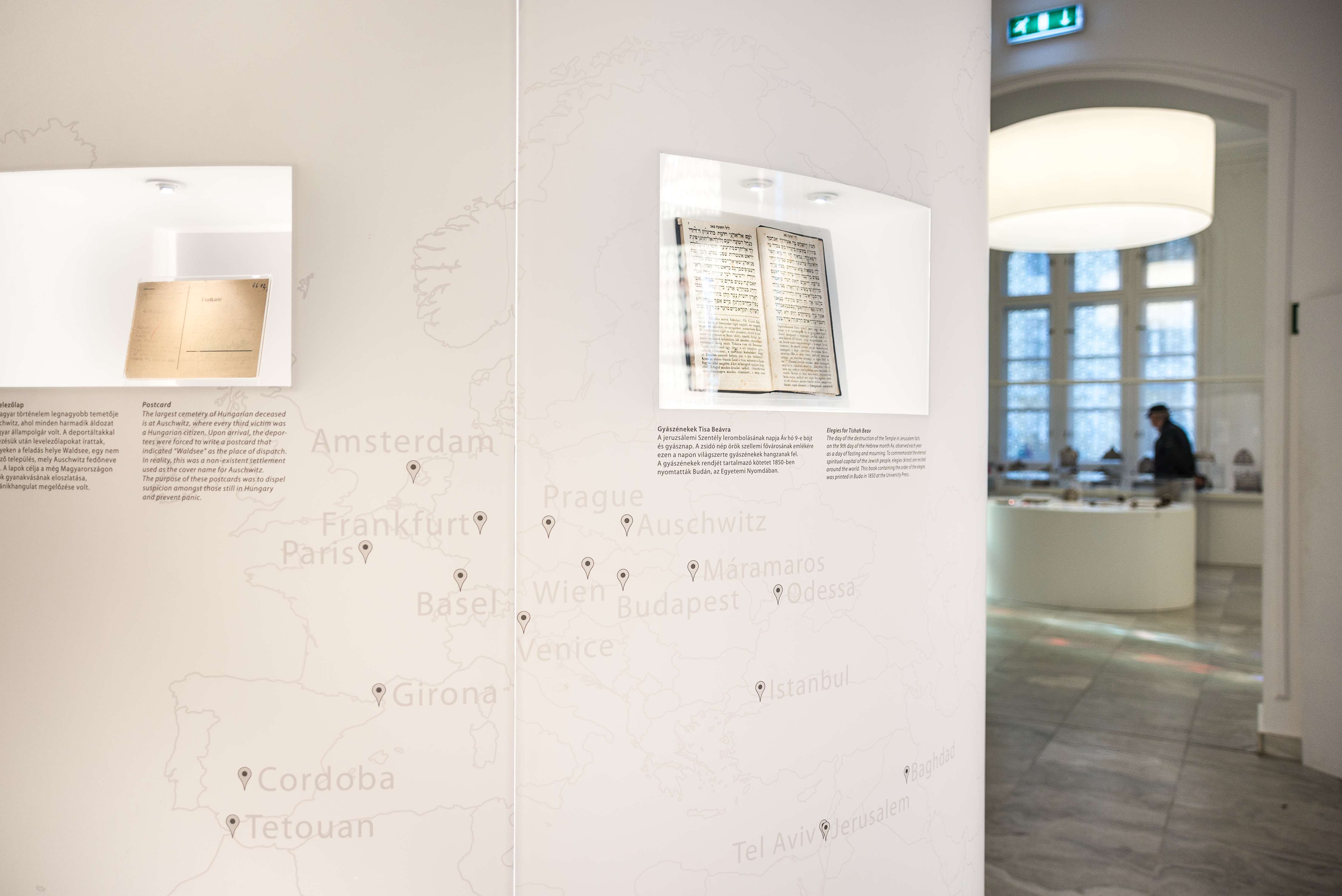
Although it is only an impression reminding us of a watermark, it allows a deeper insight into the culture – by Moon phases, names of feasts and symbols – to its observers. Several angles had great importance here: first, Hebrew letters had to appear – this is a basic element of the culture of Judaism; but we have an additional panel, it can be seen by the visitor together with the cylinder with a rabbinic explanation on it, and upon entering the space, visitors can read the combination of these two elements.
At expositions, we do not look at a single object but we focus on an entire group of objects, an arrangement or experience of space. On the whole, visitors get a certain receptive experience and if all this is presented in such a connected manner, I think – or rather hope – that visitors receive an interpretation of Judaism that we intend to convey.
In what terms did the final outcome exceed the original concept?
Creation of these cylinders was an immense experience for me. I really embrace the experience of having a sound concept of something that – after taking its shape – is obviously somewhat different, because technology, realization and practical details do not allow it to go the way I imagined. My original idea was that there would be a steel line on this cylinder that could be turned and see what day it was – and it would have been also available as a digital device. Finally, we decided to drop this idea because the presence of digital culture in the present reality – in a museum, gave us a lot of thinking. First of all, we should remember that this is a technology that is aging rather rapidly, requiring continuous replacements and making a permanent exhibition complicated to manage. Therefore, we will offer such digital devices to our visitors separately, installed in the benches. However, this clean and plain surface of the cylinders – without such additional technology installed in them – is what makes them so timeless. At the same time, this is also very convenient because an application was designed to it enabling us to show more, for example, our visitors can even listen to the sound of the tinkle of the exhibited Pair of Rimons.
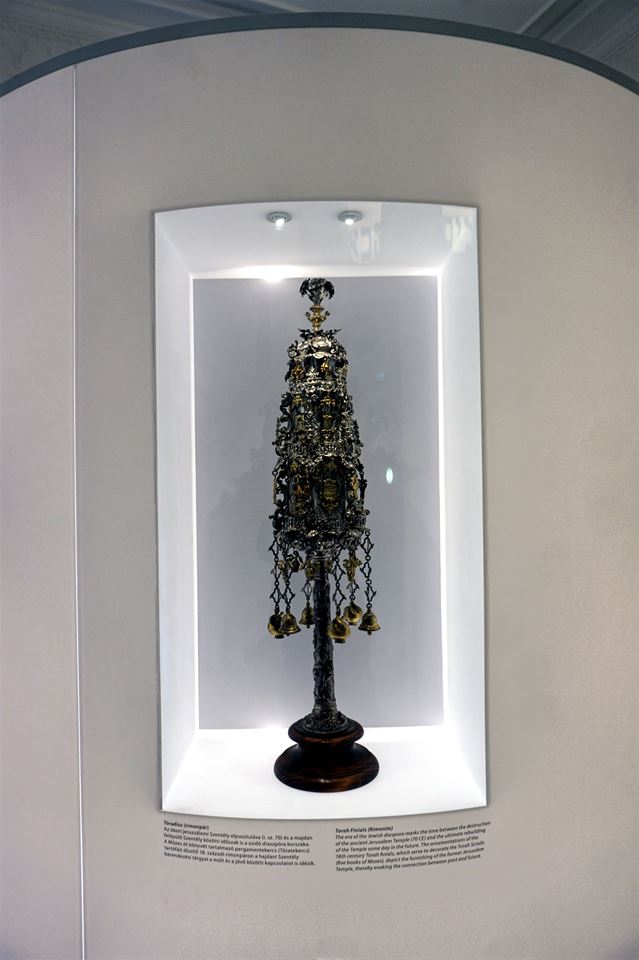
The two cylinders provide a pleasant environment for the 16 objects on exhibition. We present one object in each window, with specific, detailed description in two languages. Thanks to the special custom-designed illumination, accessories of Jewish feasts look incredibly amazing there.
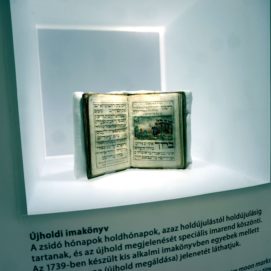
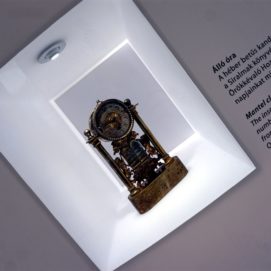
We succeeded in emphasizing what we conceived. We struggled somewhat until we achieved this stunning outcome; we had to redo the design several times but I think it is always a good thing how realization and content can shape together with form and the final result reflects this in perfect harmony. Joint work always teaches us something new and it is a source of joy for everyone.
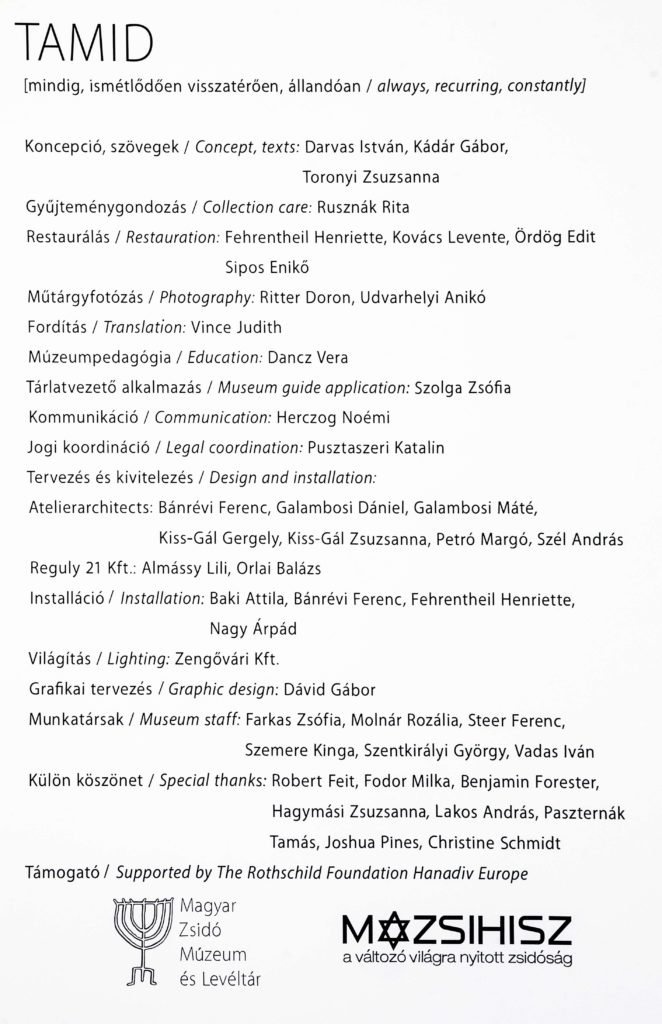
During preparation works, I worked together with maximalists, it was extremely important for everyone (including the graphic artist, the designers, the translators, the producer, the lighting designer and me) to make this truly impeccable; as even the smallest mistake looks greater on such a plain surface, compared to a more noisy or visual surface.
The renewed exposition of the Jewish Museum reaches far beyond ordinary exhibitions. In addition to local and foreign visitors, a group of teachers participating in a vocational training will also come because they want to learn how to integrate this whole exposition into education and use it for the preparation of future generations.
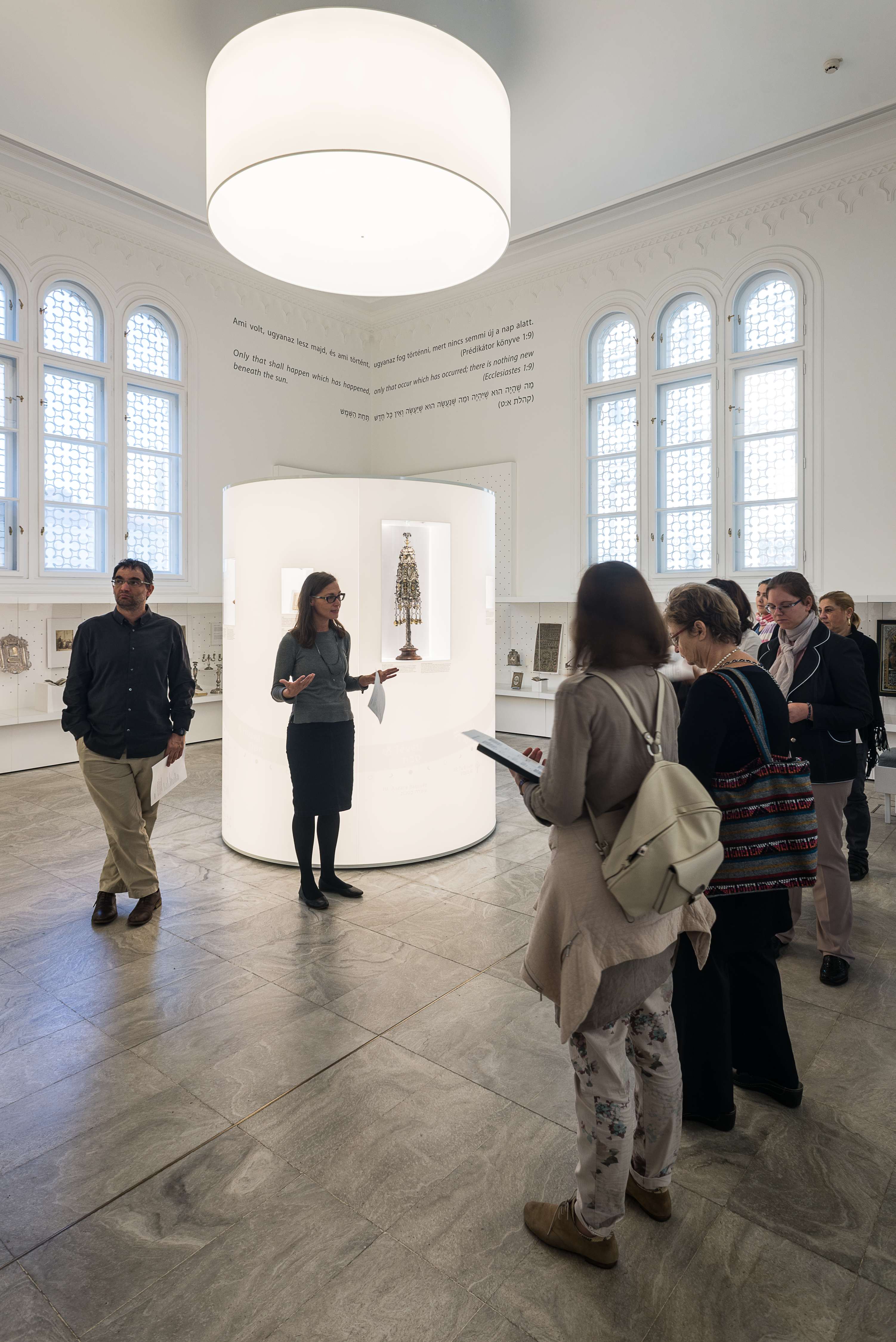
For more pictures on the project, click here.

